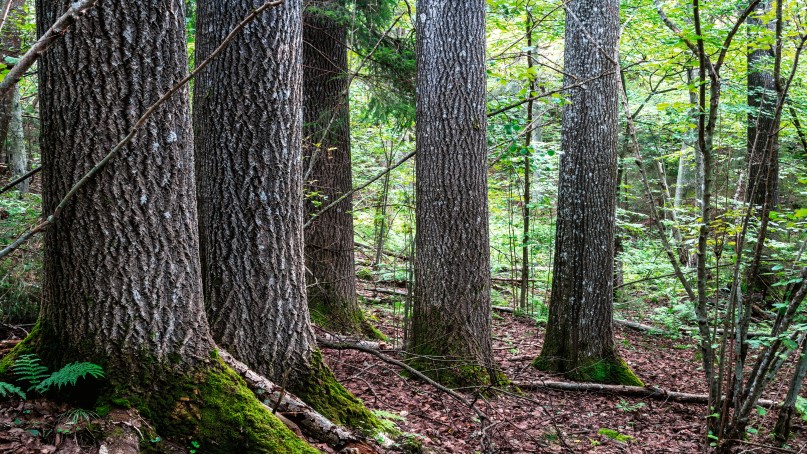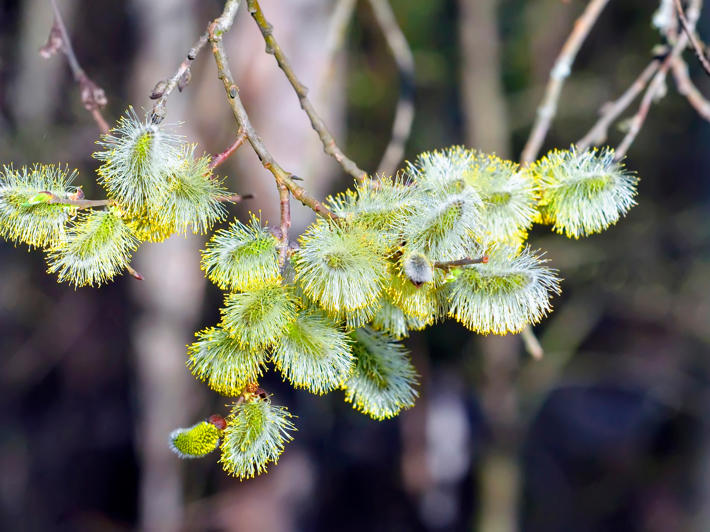“Since the beginning of June, we have only purchased pine, spruce and birch, as well as aspen with a diameter of less than 40 centimetres from Finnish forests,” says Jani Riissanen, SVP, Wood Trade and Forest Services. The diameter is measured at a height of 1.3 metres.
Sturdy aspen and other domestic broadleaved trees that are rarely found in forests, such as the great sallow, bird cherry, rowan and aspen, will be left in the forests. They are key tree species that support a diverse range of living organisms. Up till now, these rarer species, which are not used for industrial upgrading, have been harvested for industrial energy production, except for those left as retention trees.
“Working together with forest owners, we want to ensure that Finnish forests remain vibrant and healthy in the future. It’s in everyone’s interest. By operating smartly, we can both utilise wood and develop biodiversity in Finland. Of course, it’s the forest owners who decide how their forests are managed,” says Riissanen.
Applicable to standing and delivery sales
The new policy applies to both standing and delivery sales concluded on or since 1 June 2022. Sales concluded before this are not affected by the policy. However, the only exception to the purchasing policy comes from sites where felling is carried out due to a change in land use, meaning that forest is felled to make way for fields or to construct a road, buildings or electric power lines, for example. On such sites, the decision to remove all the trees has already been made before the wood trade.
Additionally, the policy does not apply to alien tree species such as larch or to hybrid aspen stands that have already been established in the forests by the cooperative’s owner-members.
If, in connection with felling, owner-members wish to fell rarer broadleaved trees for their own firewood use, they can do so in the same way as before. However, this is not recommended due to biodiversity aspects. In connection with young forest management and preliminary clearing, rarer broadleaved trees can also be felled, but Metsä Group will not purchase them for industrial energy production. Nevertheless, the forest owner can sell such trees as firewood or energy, if they wish.

Richness of species supports the vitality of forests
“Pine, spruce and birch account for 97 per cent of the volume of Finnish forests. Aspen accounts for 1.7 per cent of the volume, and part of this is sturdy aspen. With all the other tree species accounting for the remaining 1.3 per cent, it’s important to preserve and increase the volume of rare broadleaved trees – for the sake of forest biodiversity and our adaptation to climate change,” says Juho Rantala, SVP, Development.
Species richness is believed to improve forests’ ability to remain healthy and thrive in a changing environment. “Different trees are favoured by different species. The retained trees form diverse forest stands that remain in place across rotation periods and contribute to the generation of decaying wood in commercial forests,” says Rantala.
“This policy does not conflict with good forest management in any way. We’ll continue to perform young stand management in accordance with good forest management practices,” says Rantala.
At different stages of young stand management, a suitable number of broadleaved trees are left in the forest to promote the establishment of mixed forests. For example, a mix of broadleaved trees has been shown to improve tree growth in spruce-dominated forests. Ideally, broadleaved trees that are rarely found in forests should be assigned as retention trees in the early stages of forest management.
Crown wood accounts for the bulk of woodchips
Metsä Group’s and its owner-members’ main contribution to renewable energy production in Finland comes from pulp and bioproduct mills that are more than self-sufficient in electricity.
Furthermore, Metsä Group supplies solid wood fuels to its industrial customers. Such fuels include industrial by-products such as bark and woodchips, as well as crown wood, delimbed energy wood and forest chips made of whole trees. Rare broadleaved trees have accounted for some of the delimbed energy wood and whole trees. As the supply volumes increase, these will be replaced with crown wood, while more common tree species will be used for other wood fuels.
“Solid wood fuels are mainly by-products. Crown wood is the single largest source of forest woodchips. Metsä Group’s wood consumption will increase following the introduction of the Rauma sawmill and the Kemi bioproduct mill, which means the volume of by-products and crown wood used for energy will also increase,” says Peter Pekkola, Wood Energy Manager.
Currently, the use of by-products for energy production is sensible and resource-efficient overall. However, Metsä Group’s innovation company Metsä Spring continues to explore new uses for by-products, and in the future, uses offering a higher conversion value than burning may be found for bark, for example. Metsä Group’s goal is to increase the value of its owner-members’ forest-based assets.
This article was published in issue 2/2022 of Metsä Group’s Viesti magazine.
Text: Krista Kimmo
Photos: Jari Kurvinen and Esa Ervasti
